 |
Closer Look
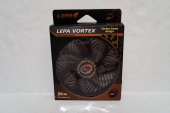 |
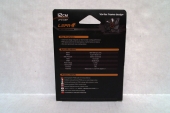 |
The Vortex’s box has a large view window on the front with a list of specs and features on the back.
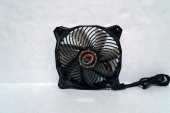 |
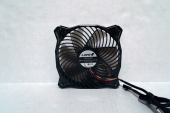 |
With the fan out of the box we can better see the Vortex frame design. I imagine the curvy rear finger guard is what creates the vortex effect Lepa says it is capable of.
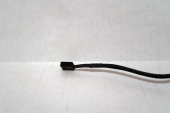 |
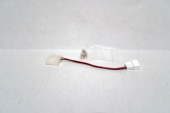 |
The overall construction of the fan feels solid. The wiring is sleeved with heat shrink on the ends for that smooth, high quality look. The only accessories included with the fan are a 3 pin to molex adapter and 4 screws for mounting.
Noise Levels
Noise levels were measured with a decibel meter approximately 10 inches away from the fan, outside of the airflow. The ambient reading was 41 dB.
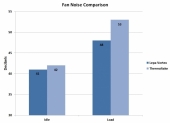 |
We compared the Vortex to the stock fans on the Thermaltake Water 2.0 Pro. These fans are pretty loud but push a large amount of air and have high static pressure. At idle the Vortex was silent, giving a reading no louder than ambient. At 100%, levels jumped up to 48 dB, still extremely quiet given ambient readings.
Testing
Testing the Vortex consisted on putting it on the Water 2.0 Pro’s radiator in the push position and comparing CPU load temperature to stock.
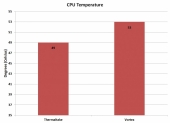 |
Although the Vortex does create a tunneled air effect that can effectively direct air to a certain spot, it just doesn’t have the power needed to push through a thick radiator such as the 2.0 Pro’s. Because of this, load temperatures rose 4 degrees.
Conclusion
The Lepa Vortex is a neat design. It does make the claimed “air twirl”, and although it is not pushing a lot of air overall, the majority of the air pushed is going exactly where you want it to, and it is being done almost silently. The Vortex should make a decent case fan, especially in cases with adjustable fan mounts that can be pointed wherever you want. But for CPU coolers, especially thick radiators, it just needs more muscle.
All in all, I would have traded more power at the cost of a little more noise. The fan is absolutely silent at idle, and not much louder at load. If a few decibels more at load meant a larger amount of air directed exactly where you need it to be, it could be a serious case fan. But how it is now, it will be great for applications where low noise is more important than high performance.

lotsa spelling errors in this one 😛
interesting review, would love to play with one of these, for a quiet computer they would be great for side panel/window installs
It is an interesting fan. Perfect for what you are describing.
I actually have it installed as a front intake in my case pointed directly at my GPU.